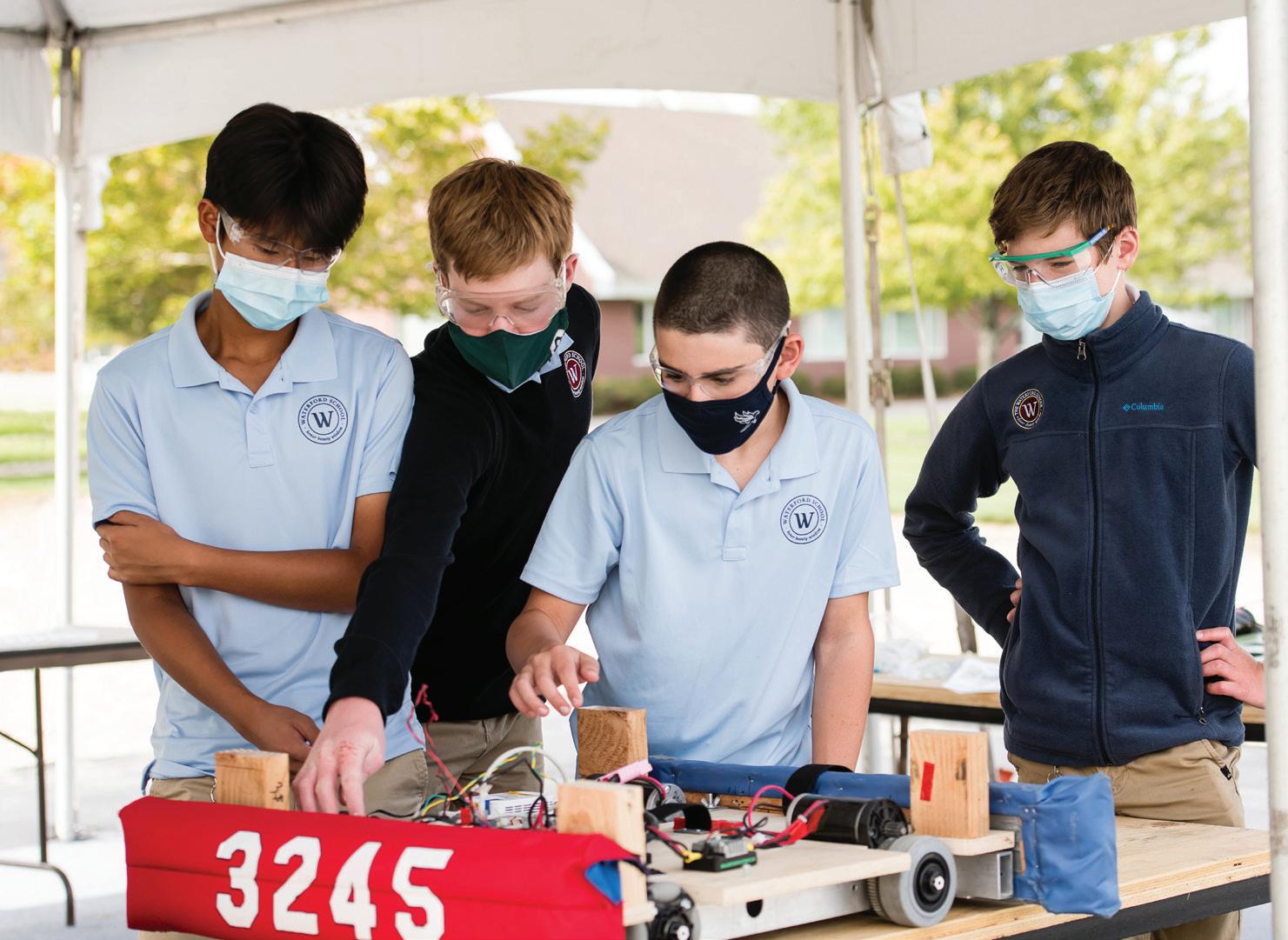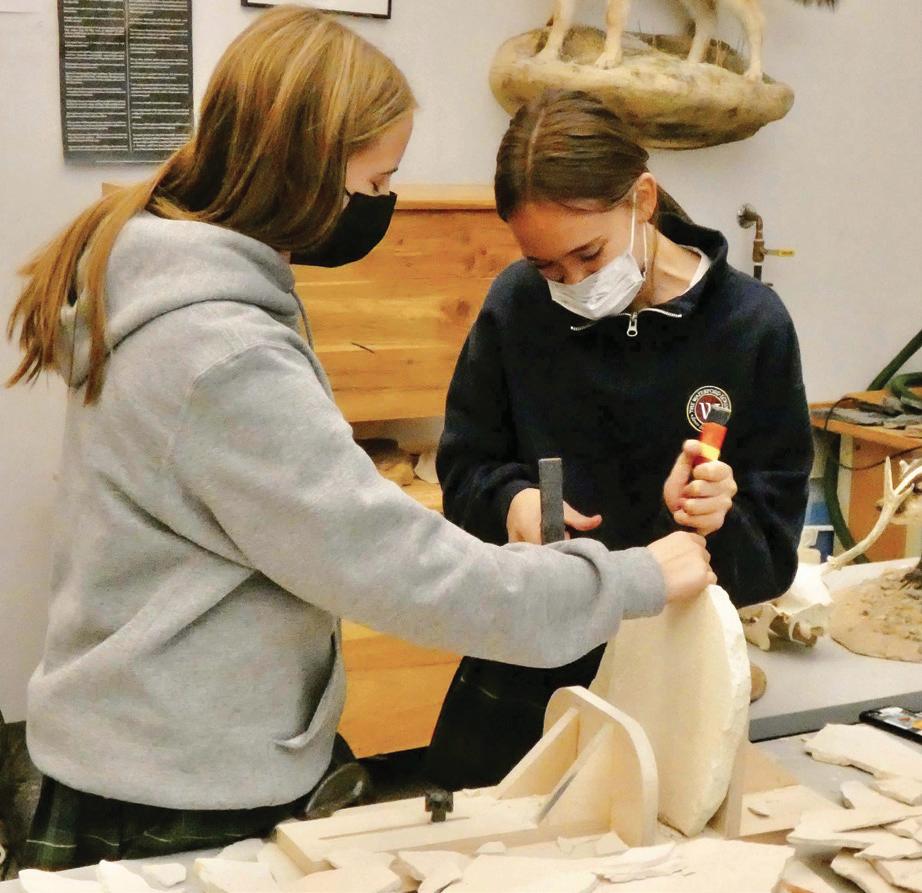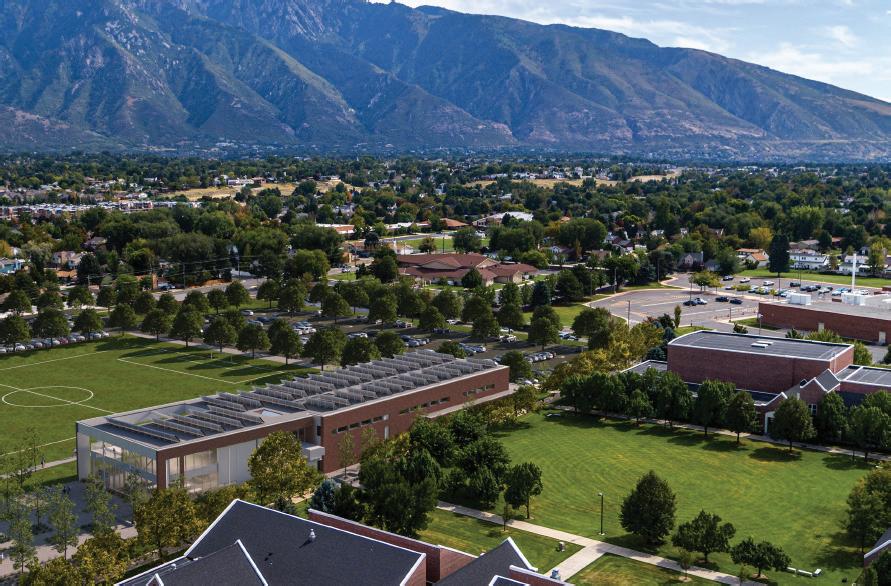
6 minute read
SCIENCE & THE LIBERAL ARTS
AND THE Liberal Arts
By Brandon Bennett, Associate Head of School and Middle & Upper School Head
Ever since the founding of Waterford School 40 years ago in 1981, curriculum has been an overarching preoccupation. True excellence in student learning rests upon the foundation of true excellence in program design. An outstanding teacher can facilitate outstanding learning with very little beyond a robust fund of knowledge, an informed sense of teaching strategy, and the meeting of curious minds. But, of course, truly excellent facilities can make the learning process much easier and more impactful. With each new building Waterford added to the Sandy campus, there was a corresponding leap forward in the quality of our program. For example, the construction at the end of the last century of what is now the Nancy and Dustin Heuston Center for the Arts led to the emergence of truly world-class programs across all the arts, from the orchestra to the photo labs and art studios to the black box theater and ballet stage. At the same time, there was a cultural transformation within the student community, as the arts took their rightful place alongside the academic disciplines and athletic pursuits at the center of a compelling liberal education. But without outstanding artist-teachers developing outstanding arts curricula, the facilities alone would have been meaningless. Our science faculty have kept this truth in mind over the 20 years or so they have been thinking about, planning for, and breathlessly anticipating the construction of a new science center equipped with truly
world-class facilities. As we look forward to the groundbreaking ceremony for this new facility in the spring, it is worthwhile to reflect on the liberal arts approach to science curriculum and instruction that has animated science education at Waterford over nearly 40 years, and that, in an enhanced form, will continue to animate the activities in the new science center over the next 40 years and more. When conversations about a new science center first started at Waterford, Nancy Heuston sent Mark Bromley, James Harris, Bob Capener, and Ken Shaw on a series of road trips to visit outstanding independent schools with strong science programs and facilities. The school also hired a consultant to guide the department through a review of current curriculum and an exploration of where the curriculum needed to go in the years ahead. The goal was to be ready when the science center’s time finally came. That time is now, and we are ready! Emerging from those early conversations with the science curriculum consultant was a new Waterford science mission statement that highlighted five pillars that have guided Waterford science programming ever since, and that will continue to guide it as we bring the new science center online in the months ahead: 1) the body of core science knowledge; 2) the habits of scientific thinking, including ethical reflection;


Upper School students work on their robot, 2020. Photo by Amanda Nelson.
3) a robust scientific skill set; 4) an interest in applying science to solve real problems; and 5) an appreciation for the beauty of the natural world and for the beauty of the scientific enterprise. Curriculum design in science at Waterford involves thinking carefully and collaboratively at every grade level to craft courses, units, projects, and daily lessons that engage students with all five pillars of the science mission statement. This work is never done. Like curriculum development in every discipline, science programming is always evolving, and Waterford science teachers are always eager to improve. Current work is underway to refine the Class VI curriculum to be more unified and cohesive under the direction of a single teacher in each section. As we make the transition to the new building, we anticipate revising the upper school sequence of foundational courses to have it start with physics, instead of biology, in the hopes of providing an ever stronger foundation for deeper scientific learning. The new science center with its stateof-the-art labs and maker spaces will allow our science faculty to take the tethers off their imagination and creativity. In a very real sense, everything will be possible—or, at least, it will feel that way. Students will have the room and the time to dig into material, pose new and more sophisticated questions, consider real-world applications, and shape experiments capable of pursuing answers to those questions and testing the viability of those applications. Robotics, along with all the other science electives, will finally have facilities worthy of the passion already present in the students, while the core scientific disciplines of physics, chemistry, and biology will have adjacent lecture and laboratory spaces fully adequate to the challenge of laying down a firm foundation of science knowledge and scientific thinking and procedural skill in every Waterford student. As always, the teachers will make this happen through the quality of their ever-evolving curriculum planning and execution. Facilities alone are never enough. Through all their efforts, Waterford science faculty, grounded in the liberal arts tradition, will be thinking across the
five pillars of the science mission statement, searching for greater depth of understanding, greater connection across disciplines and out into the real world, and ultimately greater appreciation for the beauty of truth as revealed through the ongoing project of science. It is fitting that in this anniversary year, celebrating 40 years of excellence in the liberal arts, Waterford will finally start construction on the long awaited for science center, which has been made possible by the vision and generosity of the Waterford community. The Waterford faculty can’t wait to continue the mission of science education in a truly extraordinary new building. The 40 years of excellence leading up to this moment are only a prelude to the still greater wonders that lie ahead.

Elena L. ’25 and Willow V. ’25 in the Nature Lab, 2021. Photo by Heather Mortenson.


SAVE THE DA TE
APRIL 8 2022

On Wednesday, May 12, fifteen members of Waterford’s Class of 2021 were inducted into the Cum Laude Society—a century-old organization dedicated to the goal of recognizing and honoring true academic excellence. Its member institutions include the very finest independent schools in the country and around the world. Waterford is the only school in Utah to have the distinction as a chapter member in the prestigious Cum Laude Society. Each year, the Cum Laude selection committee aims to honor students who demonstrate true scholarship. Committee members look at a students’ academic records and students’ contributions to the lively intellectual community that is fostered in the Waterford classrooms. This honor is bestowed upon the members of a graduating class who have a record of excellence in all academic disciplines and to those who demonstrate sustained commitment to the life of the mind.
The induction ceremony began with comments from Head of School Mr. Menke and World Languages Department Chair Mr. Stout. Then Abia F., member of the Class of 2021, shared her thoughts about her path of scholarship at Waterford. Dr. Bennett formally inducted the below seniors into the Cum Laude Society. These students have now joined the ranks of honored graduates from Waterford and other independent schools. We will miss them in our classrooms; we are grateful for all that we have learned from them!
The below students from the Class of 2021 were inducted into the Cum Laude Society this year (photographed L to R).
Abia Fazili Tioné Hoeckner Siya Pandit Payson Dolbin Michael Osborn Lucas Walker Barr Dolan Peter Beall Brian Wu William Martin Dylan Millard Tarun Martheswaran Omeed Moshirfar Isabel Hiestand Emma Kearon
Photo of the Waterford School campus land (Visser family’s gladiola farm) before the east soccer field was built. 1994. Photo from Waterford archives.





